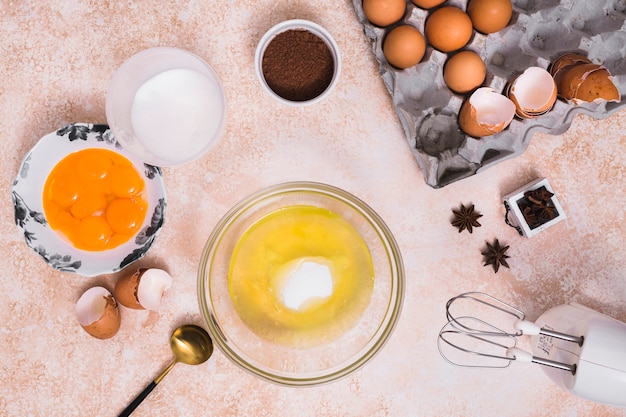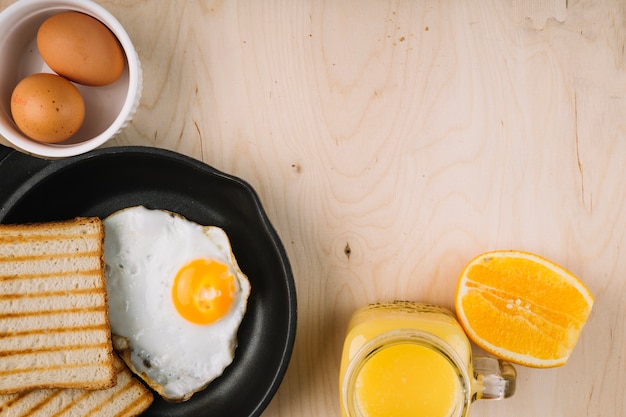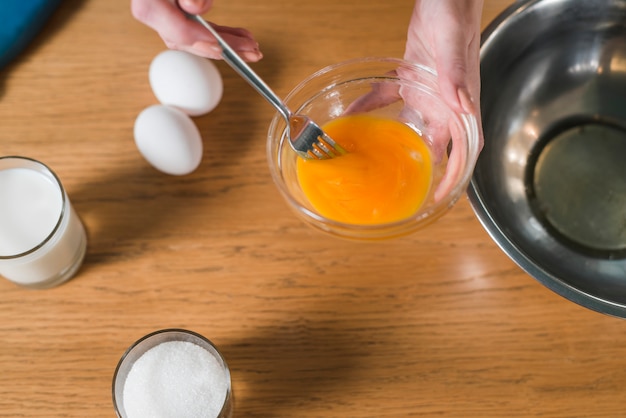The joy of a perfectly boiled egg – the smooth, creamy yolk, the firm but tender white – it's a culinary delight that's often overlooked. But mastering this seemingly simple task can be a real challenge. For years, I grappled with rubbery whites and watery yolks, a constant source of frustration in my kitchen. Then, after countless experiments and a good dose of trial and error, I finally cracked the code (pun intended!). Now, I'm ready to share my secrets to consistently achieving those picture-perfect boiled eggs, ensuring you can enjoy this simple yet satisfying treat whenever you crave it.
(Part 1) Choosing Your Eggs – The Foundation of Success

The journey towards the perfect boiled egg begins even before you reach for the saucepan. Picking the right eggs is crucial, and it’s not just about size. Freshness is key – a truly fresh egg will yield that beautifully smooth, velvety yolk we all desire. If you're shopping at the supermarket, opt for eggs with the most recent "best before" date. But if you have access to farm-fresh eggs, that's even better!
The Freshness Test: A Simple Trick
Here’s a handy tip I learned from my grandma, a simple test to determine freshness: gently place the egg in a bowl of cold water. If it sinks to the bottom and lies flat, you're working with a fresh egg. If it stands on its end, it's still good, just a bit older. And if it floats, it's time to bid it farewell!
(Part 2) The Boiling Process: A Step-by-Step Guide

Now, with your fresh eggs in hand, it's time for the boiling process itself. The key here is consistency – maintaining a steady temperature and precise timing. Here’s my tried-and-true method, designed to ensure success every time:
1. Cold Start: The Essential First Step
Always begin with cold water. It's tempting to try and rush things, but a cold start is vital for even cooking and preventing the eggs from cracking.
2. Gentle Boil: A Slow and Steady Approach
Place your eggs in a saucepan, ensuring they're completely covered with cold water, leaving about an inch of space at the top. Bring the water to a gentle boil over medium heat, maintaining a consistent bubbling without any vigorous rolling or splashing.
3. Timing is Everything: The Key to Different Textures
This is where the true artistry comes into play. Timing is everything when it comes to achieving different boiled egg textures. Here's a handy guide for a variety of preferences:
- Soft Boiled (runny yolk): 3-4 minutes. This creates a runny, luxurious yolk, perfect for a delicate and indulgent breakfast.
- Medium Boiled (Slightly Runny Yolk): 5-6 minutes. This provides a slightly firmer yolk, with a creamy texture, well-suited for sandwiches or salads.
- Hard Boiled (Firm Yolk): 8-10 minutes. This produces a fully set, firm yolk, ideal for deviled eggs or other dishes where a solid texture is required.
4. Shocking the Eggs: Stopping the Cooking Process
Once the timer goes off, immediately drain the hot water from the saucepan and replace it with a bowl of ice-cold water. This is called shocking the eggs, and it's crucial for stopping the cooking process instantly. It prevents the yolk from developing a greenish tint around the edges, preserving that vibrant yellow hue.
(Part 3) The Art of Peeling: Tackling the Shell

Let’s be honest, peeling boiled eggs can be a bit of a pain. That stubborn membrane can cling on for dear life, making the process frustrating. But don’t despair! I’ve learned a few tricks over the years to make peeling a breeze.
1. The Age-Old Trick: Salt for Smooth Peeling
Add a teaspoon of salt to the boiling water. It's a simple yet effective trick that helps prevent cracking and makes peeling smoother.
2. The ice bath: Loosening the Shell
After shocking your eggs in cold water, let them sit submerged for at least 10 minutes. This gives the shell time to loosen, making peeling a much easier task.
3. Tap, Tap, Tap: Creating Tiny Cracks
Gently tap the bottom of the egg on a hard surface, like the counter or the bottom of the saucepan. This creates tiny cracks that make the shell more receptive to peeling.
4. The Roll: Loosening the Shell Further
Roll the egg between your palms, gently but firmly. This helps loosen the shell even more, making it easier to remove.
5. The Peel: A Gentle Approach
Start peeling at the wider end of the egg, where the air pocket is located. Gently peel the shell away, working your way around the egg, using your fingers or a spoon to carefully remove any stubborn bits of shell.
(Part 4) Tips for Perfect Boiled Eggs: Elevate Your Technique
Now that you've mastered the basics, here are a few extra tips to refine your boiled egg game and ensure consistently perfect results:
1. Avoid Overcrowding: Plenty of Space for Success
Give your eggs plenty of room in the pan to avoid them bumping into each other and cracking. Allow ample space for each egg to move freely in the water.
2. The Vinegar Trick: Preventing Cracking and Firming the White
Add a tablespoon of vinegar to the boiling water. It not only helps prevent cracking but also makes the white more firm and less likely to become rubbery.
3. Don’t Overcook: The Key to a Creamy Yolk
Overcooked eggs have a rubbery white and a dry, chalky yolk. Keep a close eye on the timing and stick to the guide we provided earlier to avoid overcooking.
4. Experiment with Different Textures: Explore a World of Options
There’s a whole world of egg textures to explore! Don’t be afraid to experiment with different cooking times to discover your favourite texture.
(Part 5) Creative Egg Dishes: Beyond the Basic Boiled Egg
A perfectly boiled egg is a versatile ingredient, perfect for breakfast, lunch, or dinner. Here are some ideas to inspire you and expand your culinary horizons with boiled eggs:
1. classic deviled eggs: A Timeless Favourite
Deviled eggs are a timeless party snack or appetizer, always a crowd-pleaser. Chop the boiled eggs, mash the yolk with mayonnaise, mustard, and your preferred seasonings, then pipe the mixture back into the egg white halves for a visually appealing presentation.
2. Eggs Benedict: A Brunch Classic
Eggs Benedict, with its poached eggs on english muffins, topped with hollandaise sauce and crispy bacon, is a brunch classic. But you can also substitute boiled eggs for a slightly different flavor and texture, offering a unique twist on this popular dish.
3. egg salad Sandwiches: A Simple and Satisfying Lunch
A simple and satisfying lunch, egg salad sandwiches are made with chopped boiled eggs, mayonnaise, mustard, and your favourite seasonings. Spread the mixture onto bread or crackers for a quick and nutritious meal.
4. Nicoise Salad: A Light and Refreshing French Salad
Nicoise salad, a classic French salad, features boiled eggs, tuna, olives, tomatoes, and potatoes, offering a light and refreshing salad perfect for a summer lunch or dinner.
5. Egg and potato salad: A Hearty and Comforting Dish
Egg and potato salad is a hearty and comforting dish, a classic British picnic favourite. It's made with boiled eggs, potatoes, mayonnaise, mustard, and other seasonings, creating a filling and flavorful salad.
(Part 6) Storing Boiled Eggs: Keeping Them Fresh
Boiled eggs can be stored in the refrigerator for up to a week, maintaining their freshness and quality. Always ensure they are completely cooled before storing them in a container or a bowl of cold water. This helps prevent the yolk from turning green and preserves their optimal flavour.
(Part 7) Troubleshooting: When Things Go Wrong
Even with the best intentions, sometimes things don’t go according to plan. Here are a few common problems and solutions to help you troubleshoot those pesky boiled egg mishaps:
1. Green Yolk: A Sign of Overcooking
The green tint around the yolk is often caused by overcooking, particularly when boiling for longer than 10 minutes. This colour change occurs due to a reaction between the iron in the yolk and the sulphur in the egg white, intensified by prolonged heating.
2. Cracked Eggs: Preventing Those Frustrating Mishaps
Cracked eggs can be a real pain, but you can prevent them with a few simple measures. First, always use a cold start for your boiling water. Second, avoid overcrowding the pan, giving your eggs plenty of space to move freely. Third, consider adding a tablespoon of vinegar to the boiling water, which can help to prevent cracking.
3. Rubber White: Avoiding Overcooked Whites
A rubbery white is another indication of overcooking. If the egg white is excessively firm and rubbery, try reducing the cooking time next time.
(Part 8) The Perfect Boiled Egg: Practice Makes Perfect
Like anything else, mastering the art of the perfect boiled egg requires a bit of practice. Don’t be discouraged if your first few attempts aren’t quite perfect. Keep experimenting with different timings and techniques until you find the combination that works best for you and your taste preferences. Remember, there’s no such thing as a bad boiled egg, just a good excuse to try again and refine your skills!
FAQs
Here are some commonly asked questions about boiling eggs, providing insights and answers to common concerns:
1. Can I use brown eggs or white eggs?
The colour of the shell makes no difference to the taste or texture of the boiled egg. Use whichever you prefer, and don’t let the colour influence your choice.
2. What happens if I boil eggs for too long?
Overcooked eggs will have a rubbery white and a dry, chalky yolk. The yolk may also turn green around the edges. To avoid overcooking, always follow the timing guide closely and avoid exceeding the recommended times.
3. Can I boil eggs in the microwave?
It’s not recommended to boil eggs in the microwave. The uneven heating can cause the eggs to explode, which can be dangerous. It's best to stick to traditional stovetop boiling for consistent and safe results.
4. How long can I store boiled eggs in the refrigerator?
Boiled eggs can be stored in the refrigerator for up to a week. Make sure they are completely cooled before storing them to maintain freshness and prevent spoilage.
5. What’s the best way to peel boiled eggs?
The best way to peel boiled eggs is to shock them in cold water after boiling. This will help to loosen the shell and make peeling easier. You can also tap the bottom of the egg on a hard surface to create tiny cracks, further aiding the peeling process.
Everyone is watching

Prime Rib Roast Cooking Time Chart: Per Pound Guide
Cooking TipsPrime rib roast. Just the name conjures images of lavish dinners, crackling fires, and hearty laughter. It’s ...

How Long to Bake Potatoes in the Oven (Perfect Every Time)
Cooking TipsBaked potatoes are a staple in my kitchen. They're incredibly versatile, delicious, and surprisingly easy to m...

Perfect Rice Every Time: The Ultimate Guide to Cooking Rice
Cooking TipsAs a self-proclaimed foodie, I've always been a bit obsessed with rice. It's the foundation of countless cuisi...

The Ultimate Guide to Cooking Asparagus: Tips, Techniques, and Recipes
Cooking TipsAsparagus. The mere mention of this spring delicacy conjures up images of vibrant green spears, crisp and burs...

Ultimate Guide to Cooking the Perfect Thanksgiving Turkey
Cooking TipsThanksgiving. Just the word conjures up images of overflowing tables laden with delicious food, the scent of r...
